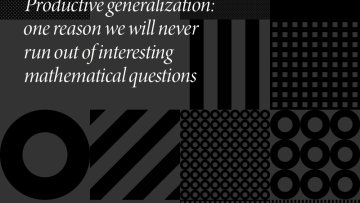16:00
Propinquity of divisors
Abstract
Let n be a random integer (sampled from {1,..,X} for some large X). It is a classical fact that, typically, n will have around (log n)^{log 2} divisors. Must some of these be close together? Hooley's Delta function Delta(n) is the maximum, over all dyadic intervals I = [t,2t], of the number of divisors of n in I. I will report on joint work with Kevin Ford and Dimitris Koukoulopoulos where we conjecture that typically Delta(n) is about (log log n)^c for some c = 0.353.... given by an equation involving an exotic recurrence relation, and then prove (in some sense) half of this conjecture, establishing that Delta(n) is at least this big almost surely.


